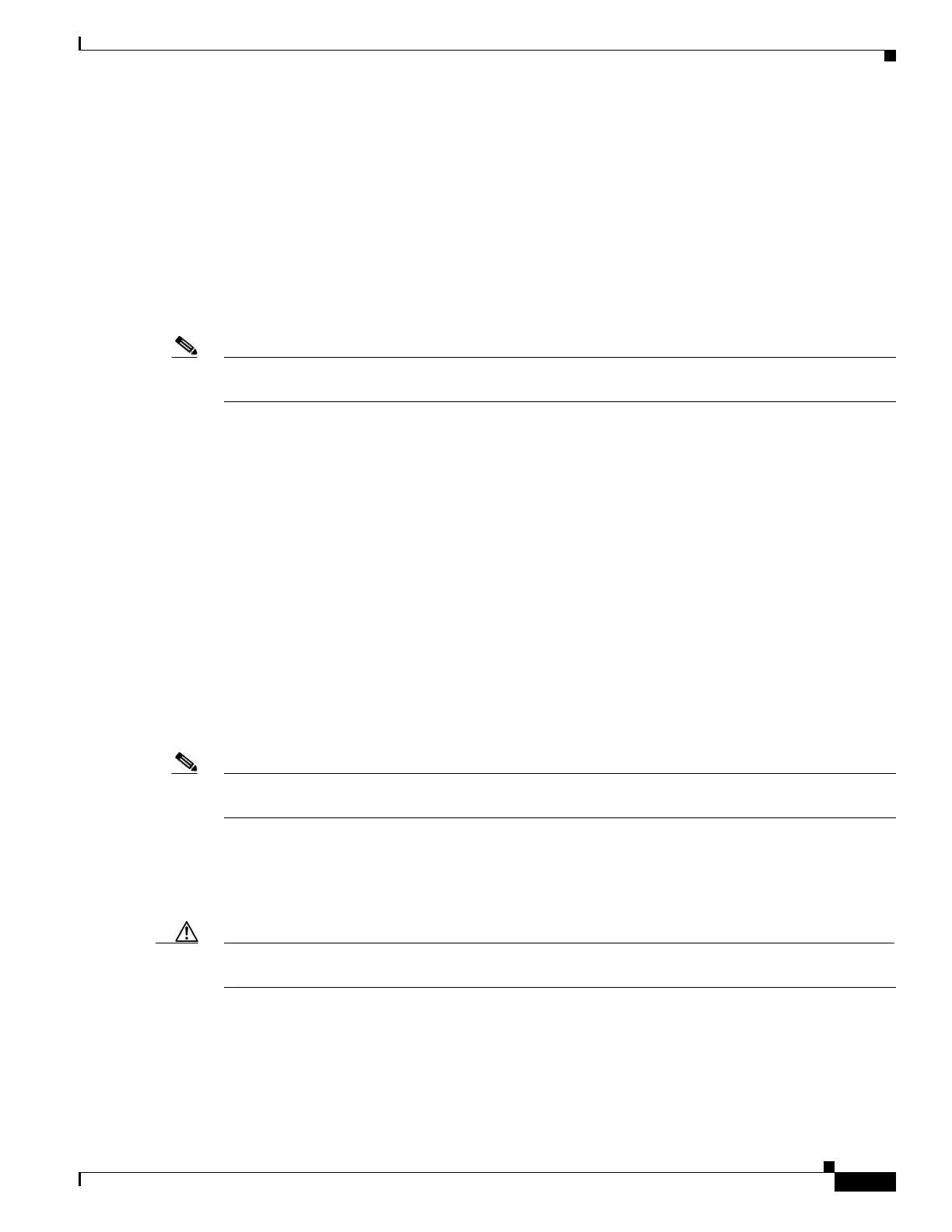16-15
Cisco ONS 15454 DWDM Reference Manual, R8.5
78-18343-02
Chapter 16 Alarm and TCA Monitoring and Management
16.7 Alarm Suppression
16.7 Alarm Suppression
The following sections explain alarm suppression features for the ONS 15454.
16.7.1 Alarms Suppressed for Maintenance
When you place a port in OOS,MT administrative state, this raises the alarm suppressed for maintenance
(AS-MT) alarm in the Conditions and History windows and causes subsequently raised alarms for that
port to be suppressed.
Note AS-MT can be seen in the Alarms window as well if you have set the Filter dialog box to show NA
severity events.
While the facility is in the OOS,MT state, any alarms or conditions that are raised and suppressed on it
(for example, a transmit failure [TRMT] alarm) are reported in the Conditions window and show their
normal severity in the Sev column. The suppressed alarms are not shown in the Alarms and History
windows. (These windows only show AS-MT). When you place the port back into IS,AINS
administrative state, the AS-MT alarm is resolved in all three windows. Suppressed alarms remain raised
in the Conditions window until they are cleared.
16.7.2 Alarms Suppressed by User Command
In the node view (single-shelf mode) or shelf view (multishelf mode) Provisioning > Alarm Profiles tabs >
Alarm Behavior tabs, the ONS 15454 has an alarm suppression option that clears raised alarm messages
for the node, chassis, one or more slots (cards), or one or more ports. Using this option raises the alarms
suppressed by user command, or AS-CMD alarm. The AS-CMD alarm, like the AS-MT alarm, appears
in the Conditions, and History windows. Suppressed conditions (including alarms) appear only in the
Conditions window--showing their normal severity in the Sev column. When the Suppress Alarms check
box is unchecked, the AS-CMD alarm is cleared from all three windows.
Note AS-MT can be seen in the Alarms window as well if you have set the Filter dialog box to show NA
severity events.
A suppression command applied at a higher level does not supersede a command applied at a lower level.
For example, applying a node-level alarm suppression command makes all raised alarms for the node
appear to be cleared, but it does not cancel out card-level or port-level suppression. Each of these
conditions can exist independently and must be cleared independently.
Caution Use alarm suppression with caution. If multiple CTC or TL1 sessions are open, suppressing the alarms
in one session suppresses the alarms in all other open sessions.

